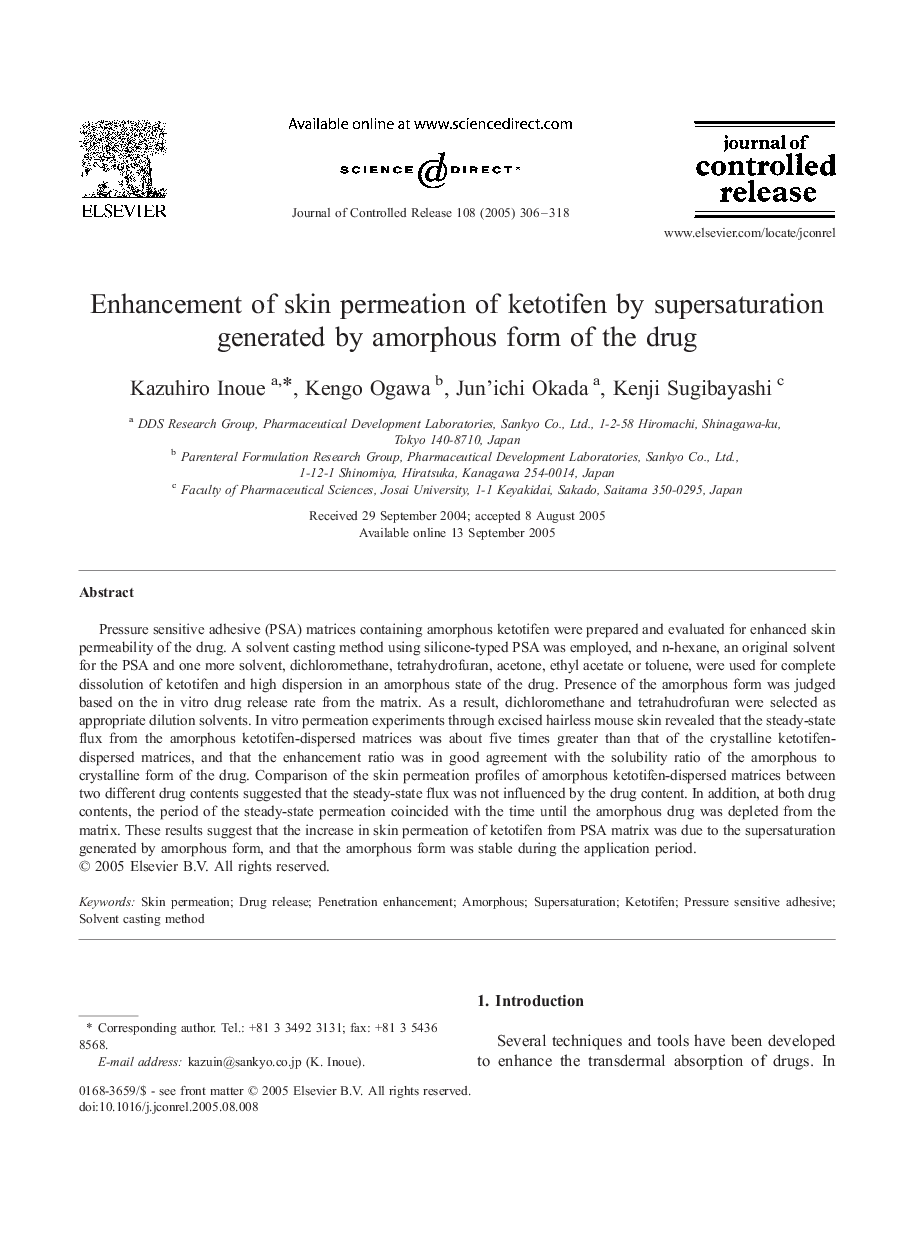| Article ID | Journal | Published Year | Pages | File Type |
|---|---|---|---|---|
| 9774619 | Journal of Controlled Release | 2005 | 13 Pages |
Abstract
Pressure sensitive adhesive (PSA) matrices containing amorphous ketotifen were prepared and evaluated for enhanced skin permeability of the drug. A solvent casting method using silicone-typed PSA was employed, and n-hexane, an original solvent for the PSA and one more solvent, dichloromethane, tetrahydrofuran, acetone, ethyl acetate or toluene, were used for complete dissolution of ketotifen and high dispersion in an amorphous state of the drug. Presence of the amorphous form was judged based on the in vitro drug release rate from the matrix. As a result, dichloromethane and tetrahudrofuran were selected as appropriate dilution solvents. In vitro permeation experiments through excised hairless mouse skin revealed that the steady-state flux from the amorphous ketotifen-dispersed matrices was about five times greater than that of the crystalline ketotifen-dispersed matrices, and that the enhancement ratio was in good agreement with the solubility ratio of the amorphous to crystalline form of the drug. Comparison of the skin permeation profiles of amorphous ketotifen-dispersed matrices between two different drug contents suggested that the steady-state flux was not influenced by the drug content. In addition, at both drug contents, the period of the steady-state permeation coincided with the time until the amorphous drug was depleted from the matrix. These results suggest that the increase in skin permeation of ketotifen from PSA matrix was due to the supersaturation generated by amorphous form, and that the amorphous form was stable during the application period.
Keywords
Related Topics
Physical Sciences and Engineering
Materials Science
Biomaterials
Authors
Kazuhiro Inoue, Kengo Ogawa, Jun'ichi Okada, Kenji Sugibayashi,
